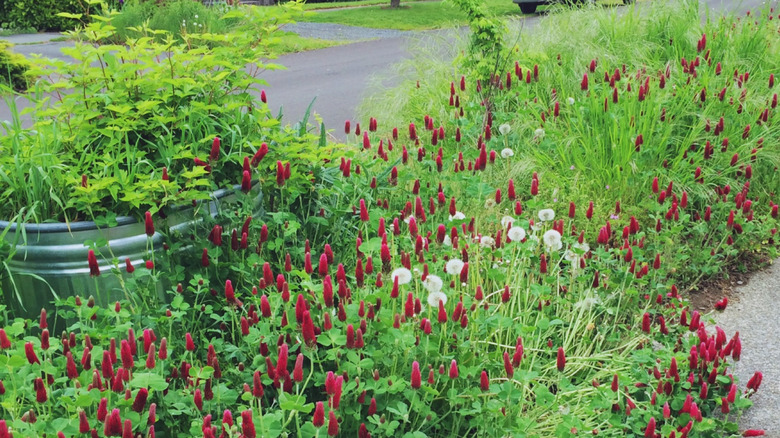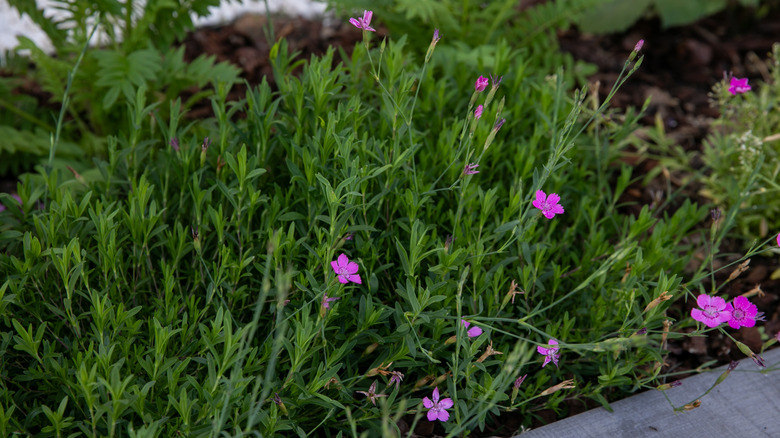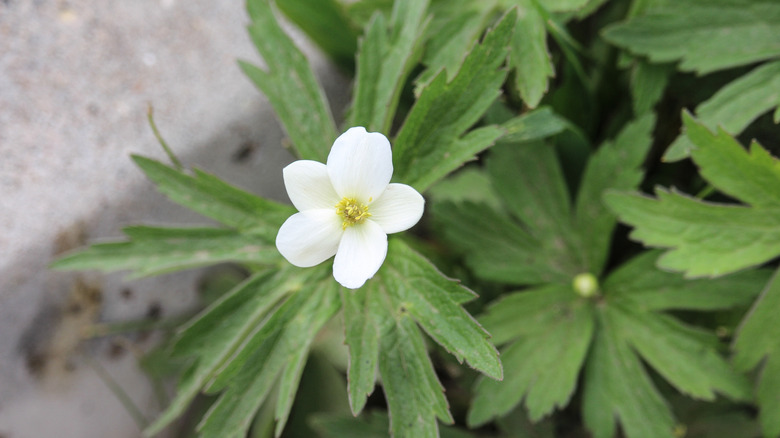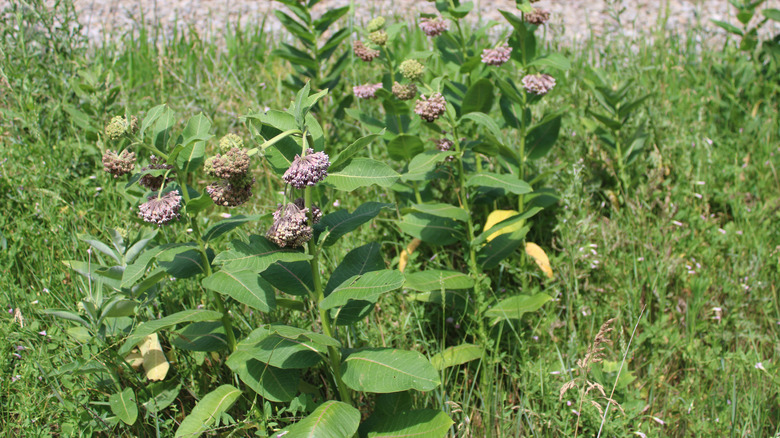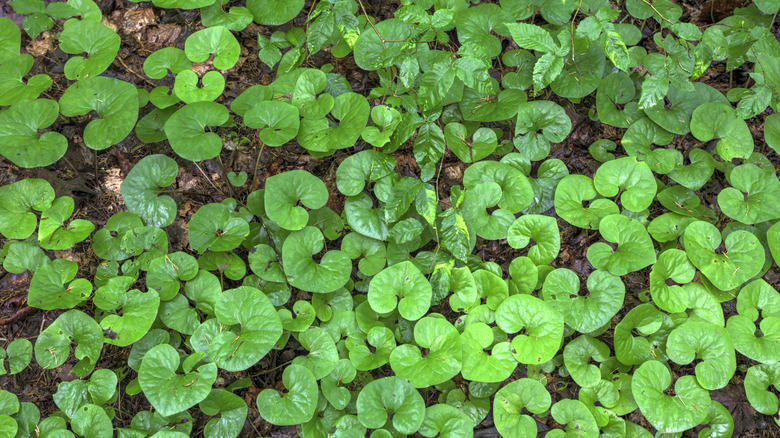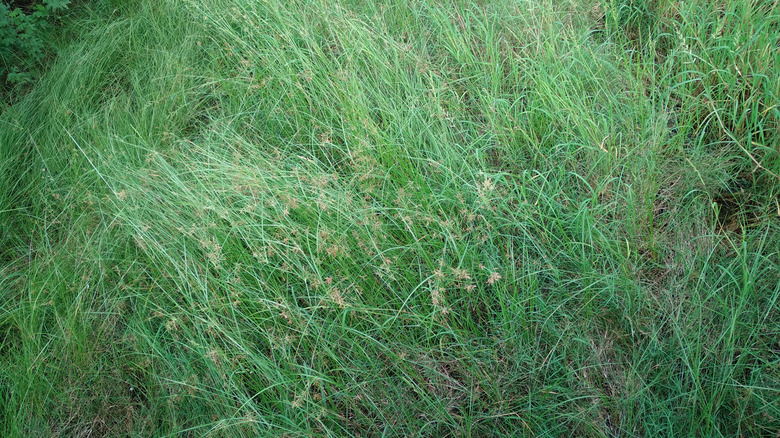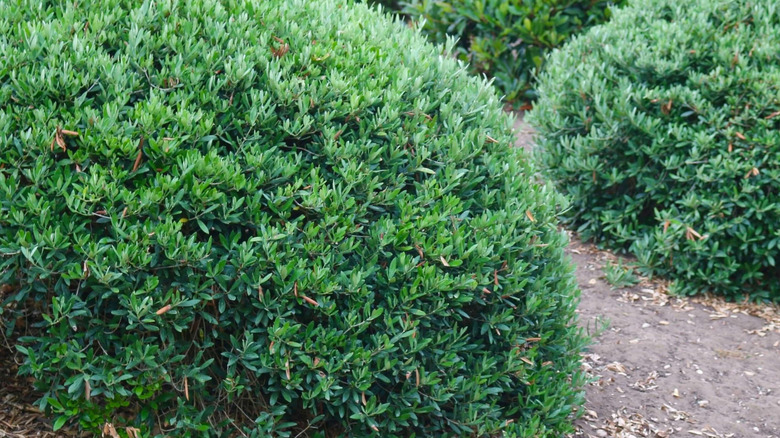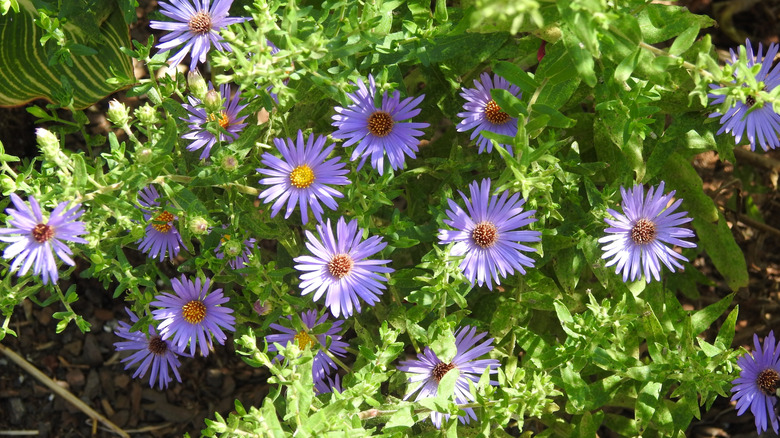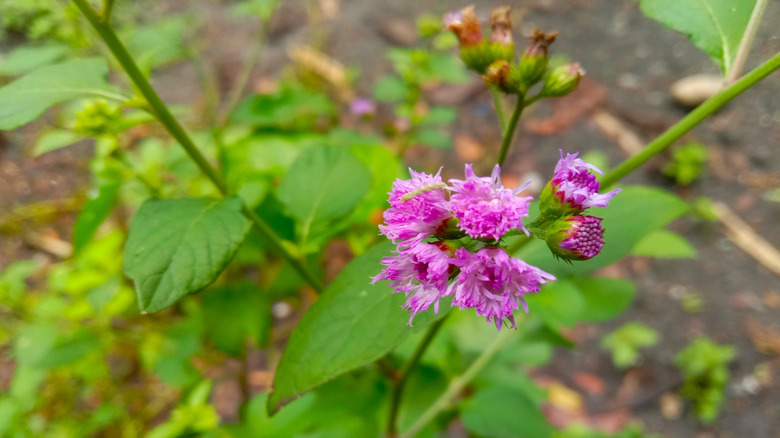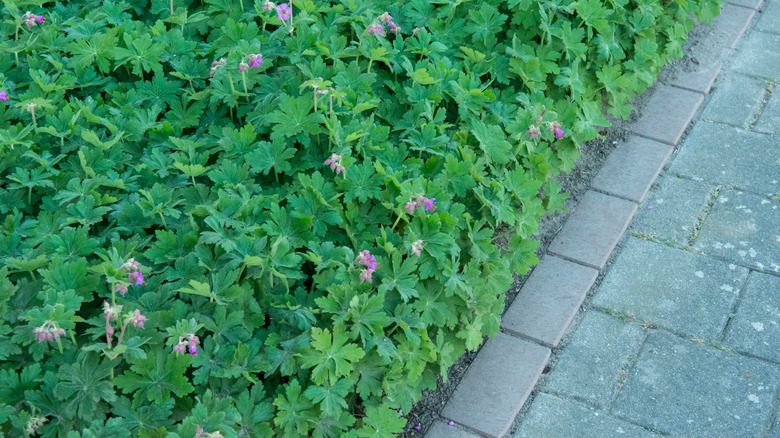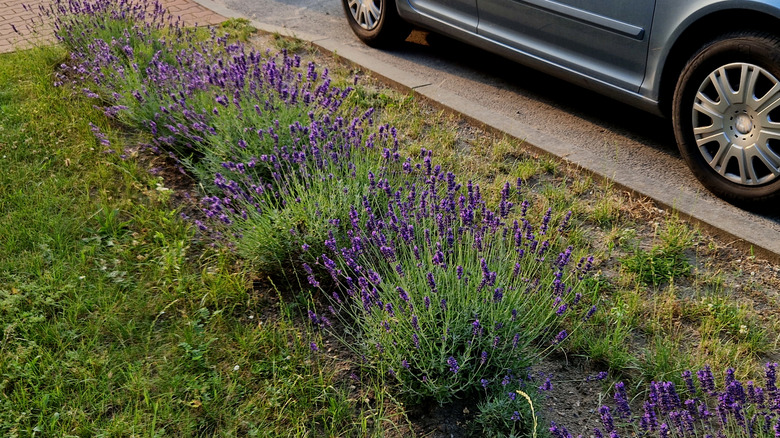The 11 Best Plants For Hellstrip Gardens That Actually Thrive
We may receive a commission on purchases made from links.
Your backyard is packed with garden beds, and your manicured front yard provides perfect curb appeal. At first glance, there seems to be no room to cultivate any more greenery. That is, however, until you creatively consider your property's borders. That strip of lawn between the sidewalk and road, called a boulevard garden or hellstrip (due to its seemingly inhospitable growing environment), is cultivable, but only if you choose the right plants. Attract butterflies and other pollinators with flowering plants like asters, native milkweeds, and bee balms. Grasses offer an attractive and drought-hardy filler for challenging pavement-side patches. Have a shady hellstrip? Wild ginger is a sun-adverse ground cover that happens to be native. Shrubs have a place in boulevard gardens, so long as they stay small, like the dwarf olive Olea europaea 'Little Ollie.'
What to consider when landscaping your front yard's park strip includes thinking about what may leach over into the garden from the pavement or road, and what you hope the garden will do for you. For example, if you live in snowy climes where roads are salted heavily in the winter, you'll need to consider salt-tolerant plants. You'll need hardy plants that can handle everything from dog excrement to flooding to dry, shallow soils to foot traffic, depending on where your hellstrip is located. Spend time designing your garden in advance of buying your greenery. Mix plants of different heights — groundcover, shrubs, and flowering plants — that prefer the same growing conditions, which are unlikely to vary in such a small space as a hell strip.
Plant sun-loving, winter-blooming dianthus in your hellstrip
Dianthus is among the low-maintenance flowering plants that will thrive in the sun, making them ideal candidates for exposed hellstrips. These pretty plants flower from winter through spring, providing pops of color when the rest of the garden is bare. These introduced flowering plants are native to Europe and Asia, perennial in most climates (they thrive in zones 3 through 9, depending on the cultivar), and boast blooms in every color. Some of the best varieties for pavement gardens include the hybrid Telstar series, the Allwoodii Alpinus group, and 'Flashing Lights' (also called 'Maiden Pink').
Attract pollinators to a hellstrip with nectar-filled and hardy sedums
Stonecrop is the collective common name for a series of succulents in the Sedum family. These hardy plants boast fleshy leaves that store water to survive times of drought and colorful flowers full of nectar for pollinators. Few plants are more perfect for the difficult growing conditions of a hellstrip. Prefer native plants? Plant the low-to-no-maintenance North American sedum species woodland stonecrop (Sedum ternatum). It's best suited to shaded pavement gardens. A Smoke Camp Crafts 2.5-inch Pot Live Woodland Stonecrop Plant costs about $24.
Contain takeover-prone native Canada anemone in a hellstrip garden
Always wanted to plant Canada anemone (Anemone canadensis) in your garden but feared it would spread? Yup, it replicates via underground rhizomes and can get aggressive. That is, in fact, just what you want it to do in a boggy hellstrip, where it's neatly contained by the road and pavement bordering each side of this unusual garden bed. While it's native, loves damp spots, and its dainty white flowers are beloved by local pollinators, this prolific groundcover isn't a fan of winter road salt and contains caustic irritants. Don't eat them!
Hellstrips planted with milkweeds provide for embattled Monarch butterflies
There are more than 100 species of North American native milkweed, so you'll have lots of options when it comes to size and flower color. Two popular plants for hellstrip gardens are swamp milkweed (Asclepias incarnata) and butterfly milkweed (Asclepias tuberosa). Avoid tropical milkweed (Asclepias curassavica), which, despite its popularity in recent years, is a host for the Monarch-harming parasite Ophryocystis elektroscirrha, or OE. Best of all, milkweeds don't just cater to Monarchs — all kinds of beneficial insects and their young ones feast on the flowers and leaves.
Wild ginger is the ideal groundcover for a shady hellstrip
Wild ginger's (Asarum caudatum) underground network of hardy rhizomes and sun aversion (it prefers at least light shade) makes this bright green ground cover one of the best native plants for hellstrips shaded by overhanging trees or roadside buildings. In fact, it's often used as a lawn substitute in challenging parts of a backyard where traditional turf grasses struggle to thrive. Pair it with other shade lovers like Solomon's seal, native geranium (more on this plant below), columbine, and hostas, or plant it under select shrubs to mimic a woodland understory environment.
Transform a hellstrip from dull to gorgeous with grasses
The advantages of growing ornamental grasses in your yard and garden are numerous, but namely, they're a low-maintenance way to add undulating texture, bold color, and wildlife habitat to an oft-neglected patch of a residential property: the hellstrip. Some species to consider, depending on which hardiness zone you garden in, include grama (Bouteloua spp.), curly mesquite (Hilaria belangeri), buffalograss (Bouteloua dactyloides), inland sea oats (Chasmanthium latifolium), Mexican feather grass (Nassella tenuissima), Lindheimer's muhly (Muhlenbergia lindheimeri), switchgrass (Panicum virgatum), little bluestem (Schizachyrium scoparium), prairie dropseed (Sporobolus heterolepis), and blue fescue (Festuca glauca).
Channel the Mediterranean in your hellstrip with a dwarf olive
While a full-size olive tree might be too big for a hellstrip, the dwarf olive Olea europaea 'Little Ollie' rarely exceeds about 3 feet in height when mature. What's more, it's fruitless, so you won't have to clean up the mess of dropped berries like you have to with the plant's larger relative. This diminutive shrub takes well to topiary pruning techniques and shapes, helping you to keep them compact with just a little work. An Olea Europaea "Little Ollie" Live Plant in a 1-gallon pot costs about $70.
Adorn your hellstrip with one of many cheerful aster species
The moniker aster encompasses a selection of species (over 600, in fact) that boast daisy-like flowers with a similar sunny disposition. Try Short's aster (Symphyotrichum shortii) for its love of sun or shade and profusion of purple blooms; flax-leaved bristly aster (Ionactis linarifolia), which thrives in xeriscape conditions; or white wood aster (Eurybia divaricata), which tolerates all soil types but heavy clay. Other native asters to consider include blue wood aster (Symphyotrichum cordifolius), large-leaved wood aster (Eurybia macrophylla), and New England and New York asters (Symphyotrichum novae-angliae and novi-belgii, respectively).
Bold gardeners add bee balm to their hellstrip for a splash of summer color
Traditional bee balm (Monarda didyma) reaches about 4 feet in height. It has a proliferation of bright flowers in hues ranging from white to pink and red to purple in the summer and seed heads in the winter that attract everything from butterflies and (of course) bees to birds. There are lots of cultivars to choose from; a variety perfect for a hellstrip is the more diminutive "Petite Wonder." These plants love the sun and will grow well in any type of soil, so long as the bed drains well.
Choose hardy geraniums for a spring-blooming hellstrip
Hardy geraniums (Geranium spp.) are ultra low-maintenance. They don't mind pollution from passing cars and are semi-evergreen, meaning they'll adorn your hellstrip with dense foliage in most seasons. What's more, they handle limited watering well once they've dug their roots into the soil and grown to maturity. Geranium maculatum, or cranesbill geranium, is a North American native geranium with delicate pink to purple flowers that also grows well in a shaded hellstrip in hardiness zones 3 through 8. Cut the plants back in late spring to encourage a few more rounds of abundant blooms.
A dry hellstrip is incomplete without lovely lavender
Nothing says cottagecore as much as a thriving batch of flowering English lavender (Lavandula angustifolia) and cultivars. Native to Europe, lavender needs lots of sun, alkaline soils, and excellent drainage, making it a superb candidate for neglected hellstrips. It's beloved by gardeners for its fragrant, pollinator-attracting blooms and ability to deter hungry herbivores like deer and rabbits. Get two live 4- to 8-inch-tall Clovers Garden English Lavender "Hidcote Blue" Plants for about $20.
